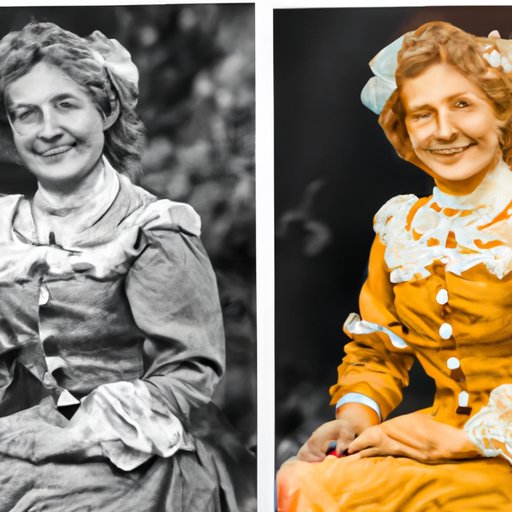Introduction
Colorization is the process of adding color to a black-and-white photograph or video. It can be done either manually or digitally, and it has become increasingly popular as a way to bring old images and footage back to life. But how exactly does colorization work? This article will explore the process of colorization and examine the science behind it, as well as the different types of techniques used and the benefits of colorizing historical images.
Explain the Process of Colorization: How Does it Work?
Colorization can be a complex and time-consuming process, so it’s important to understand the basics before diving into it. The first step is to gather the necessary software and tools. There are a number of free and paid programs available for colorizing photos, such as Photoshop, GIMP, and PaintShop Pro. Once you have the right tools, you can begin the process of colorizing an image.
The next step is to determine the color palette. This involves selecting a range of colors that will be used to fill in the various elements in the image. It’s important to choose colors that accurately represent the original scene, as this will help to create a realistic look. After the palette has been chosen, it’s time to start adding color to the image.
The exact process of colorization will vary depending on the software and tools being used, but the basic steps remain the same. First, the image is separated into layers, with each layer representing a different element in the scene. Then, the appropriate colors are applied to each layer, one at a time. Finally, the layers are merged together to create the finished product.

Understanding the Science Behind Colorization
Before attempting to colorize an image, it’s important to understand the science behind it. Color theory is the study of how colors interact and combine to create new shades and hues. Different color modes, such as RGB (Red, Green, Blue) and CMYK (Cyan, Magenta, Yellow, Black), are used to represent these combinations of colors. Knowing how to use these color modes is essential for successful colorization.
Examining Different Types of Colorization Techniques
When it comes to colorization, there are a few different techniques that can be used. Hand coloring is the traditional method of manually adding color to a black-and-white image. This technique requires patience and skill, as it involves painting directly onto the photograph with paint or dyes. Computer coloring is the more modern approach, which uses digital editing software to quickly and easily add color to an image. Hybrid coloring combines both manual and digital techniques, allowing for greater control over the colorization process.

Exploring the Benefits of Colorization for Historical Images
Bringing old photographs and videos back to life with colorization can be incredibly rewarding. Not only does it enhance the quality of the image, but it also breathes new life into it, creating a vivid representation of the past. Colorized images can be used to educate people about history, and they often generate a great deal of interest and discussion.

Investigating the Ethics of Colorization and Digital Manipulation
The ethical implications of colorization and digital manipulation are often debated. Some argue that colorizing images should be done with accuracy and respect for history in mind, while others believe that artistic license should be allowed in order to create more interesting and creative images. Ultimately, it is up to the individual to decide what is acceptable when it comes to altering historical images.
Conclusion
Colorization can be a powerful tool for bringing old images and footage back to life. By understanding the process of colorization and exploring the different types of techniques available, we can create beautiful and historically accurate images. Colorization also provides a unique opportunity to engage people with history, making it an invaluable tool for preserving our collective past.
(Note: Is this article not meeting your expectations? Do you have knowledge or insights to share? Unlock new opportunities and expand your reach by joining our authors team. Click Registration to join us and share your expertise with our readers.)
